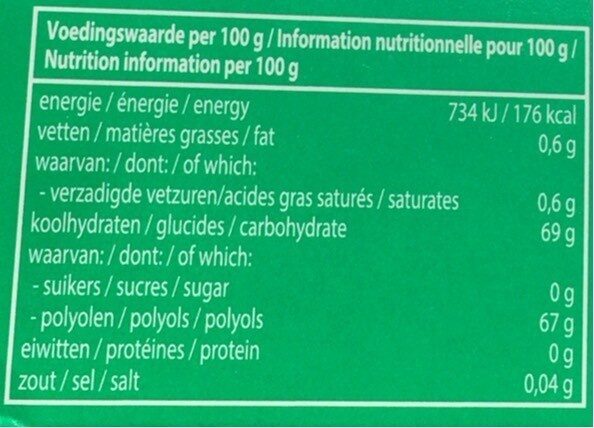Mentos Gum Blister Breeze Chlorophylle - 17.5g
This product page is not complete. You can help to complete it by editing it and adding more data from the photos we have, or by taking more photos using the app for Android or iPhone/iPad. Thank you!
×
Barcode: 80722977
Quantity: 17.5g
Brands: Mentos
Categories: Snacks, Sweet snacks, Confectioneries, Chewing gum, Sugar-free chewing gum
Labels, certifications, awards: Excessive consumption can have laxative effects
Matching with your preferences
Report a problem
Data sources
Product added on by openfoodfacts-contributors
Last edit of product page on by annelotte.
Product page also edited by kiliweb, yuka.HblgHOOzFvATHt_J1a8IhQHjH8nEH-1VHHwwog, yuka.Hex5LtKuD-A8DsHV16cr1hKCK_n8OKFFRVAjow, yuka.Jp1LJ9GgRNMIEt__wI0p-wXrNt3FBMZwEXMEog, yuka.SDdFL0w2NHI5K2NoeThJVjh6UGU4UFFwOWIyMFlXcTdDUFlmSVE9PQ, yuka.Vu0SLdvaJ-h9LfOC1acZ9RidFNz8AfhDIFcnog, yuka.XYxPHs6pIM4tRtz89poY0mWLKdreCsUENXcfoQ, yukafix.











